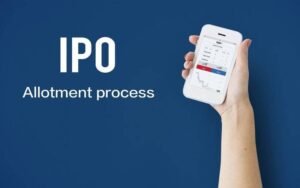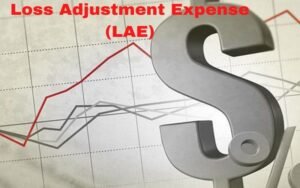What is psychological pricing?
Psychological Pricing: Setting prices for goods and services based on how people feel and think about them instead of what makes sense or is reasonable is called psychological pricing. The goal is to change how people buy things so that more sales or money is made.
Here are some examples of artificial pricing:
- A thing that is marked down from $10 to $9.99 to make it look cheaper than it is
- Putting the discounted price of $15.99 next to the original price of $19.99 will make the savings stand out
- Putting an athlete-branded shoe on sale for 50% more than the identical shoe in regular colors
- setting the price of a good at a base-10 number, like $1,000 or $5,000, to make it look even more expensive and rare
- It makes the number look smaller to show a price as $10 instead of $10.00
- Having a one-day sale to make people feel rushed
If a business wants its customers to feel like they’re getting a good deal, the best product, or cost savings, it uses different psychological pricing methods. It considers how people see prices and decide what to buy based on those views.
Synonyms
- Psychological pricing strategy
- Psychological pricing theory
How pricing based on psychology works
Psychological pricing uses how people think and act to get more customers and increase sales. It’s based on the idea that we don’t make choices based on logic but on our feelings, perceptions, and social norms.
Customers want one of three things at the very least:
- The best value for money
- The best deal
- The best stuff
People don’t know how much something should cost. Most of the time, they can tell the difference between a good deal and a bad one by looking at the sale price next to the regular price or comparing different items in the same group.
This is why customer behavior can change. By stimulating their feelings and thoughts about it, you’re “helping” them decide if your product or service is a good deal for them. Customers feel good about buying when your prices help them make that choice.
12 Kinds of How People Think About Prices
1. Charm Prices
One of the most famous psychological ways to set prices is to use charm. This method is called “odd-number pricing” or “left-digit pricing.” The goal is to price an item just below a round number, like $9.99 or $12.95.
“Left digit bias” is when people pay more attention to the last digit of a number, which is the price of an object, and round the number down to the whole amount. This bias makes people think that the difference between $2.99 and $4.00 is more significant than between $3.00 and $4.01.
People think of $2.99 as being closer to $2 than $3, which can make your product look cheaper in the split second someone needs to decide to buy it.
2. Prestige Costs
Prestige pricing is the opposite of charm pricing. It means charging more than the competition to make it seem like you have something unique and high-quality. This makes people think of your goods as high-class and expensive.
Setting prices works exceptionally well for businesses that sell expensive, rare, or technologically advanced goods. Nike might sell a limited edition colorway of the Jordan shoes for $500, even though the cost of materials and work is the same as making a pair that costs $200.
They’ll put it next to the regular-priced colors to make it appear exceptional. The higher price tag makes buyers think that the item they’re looking at is more unique than the others in the same category, even though they all do the same thing and are of the same quality.
A base-10 number is often used to price luxury brands’ goods to make them seem even more expensive. This means a Chanel bag would cost $5,000 instead of $4,999.
3. Bundle Prices
When you sell more than one item as a bundle at a discount, this is called bundle pricing. You’ll show both the regular and bundle prices for each item.
By giving people a discount if they buy more than one thing, you’re either getting them to spend more than they planned or giving them a good deal on two free things they would buy anyway.
There are two main perks to bundling:
- Increasing the number of sales and the average order value
- Getting other businesses’ sales
Say you run a shop in a mall that sells smartphones. You also sell things that go with phones, like chargers and cases.
Cell phone cases and chargers can be bought at a million different shops, but you want people to buy them from you. It makes the smartphone seem like a better buy from your store when you advertise the price as a bundle. This also stops people from buying the same products from one of your rivals.
4. Price Setting
Price lining is a business technique in which different versions of the same product are sold at different prices. Its tiered pricing is a popular way to set prices for SaaS.
This pricing approach is based on the idea that some people might not buy the cheapest item because they think it is cheap, doesn’t work well, or doesn’t meet their needs. You can reach different types of customers and find out how much they are willing to pay for your product by selling two or three different items at different prices.
5. Examples of Prices
Because you’re only showing the discounted price, your customers can’t tell whether it’s a good deal. Reference pricing tells them that your new price for the product is less than what it was worth before.
Let’s say you’re selling an information product that costs $1,000. This idea also works for products that are sold in stores. You’ve cut the price in half for the first 500 people who buy it.
People interested in what you’re offering won’t know immediately that it costs $1,000 if they only see “$500” on your landing page. Their mind will ask, “Why would I spend $500 on this if I have no idea how much it’s worth?”
But by showing them the old price, you give them some background. People will think, “Wow, they’re selling something for half of what it was worth.” Your customers will be more likely to buy from you if they think they’re getting a deal or saving money.
6. Pricing for Multiple Units
A “volume discount” or “price break” is another name for multiple-unit pricing. This is when you give your customers more value by giving them more of the same product at a lower price.
It works like group pricing, but instead of selling different items together, you sell more than one of the same items at a lower price. Most of the time, the volume discount is shown along with comparing prices per unit or percentage savings to help your buyers understand better.
Multiple-unit pricing works best for things like groceries, household goods, and toiletries that are bought over and over again. Giving people a small reason to buy more than they need will make them more likely to stick with your brand in the long run.
7. Prices for “Pay What You Want” (PWYW)
Because it’s based only on value, the “pay what you want” approach is one of the most exciting examples of consumer psychology. People can pay any amount for their goods with PWYW. They don’t have to pay anything at all.
The idea is that people will think they are wrong or guilty if they don’t give something in exchange for something good. They might also really enjoy the product and want to help it grow.
Because of these things, PWYW can work:
- It’s unique because it goes against the norm.
- Customers feel like they have power.
- You don’t separate your possible customers based on how much they can or want to pay.
- People who buy your goods don’t worry about “buyer’s remorse” or whether it’s worth the money.
- A lot more people will try your item.
- Your goods might be overvalued by buyers who don’t mean to.
Setting prices is common in content- and creativity-based fields like printing and music. For example, Wikipedia is entirely funded by its readers. Many independent musicians, authors, and news outlets also work for free, but some ask for payments in return for their work.
A PWYW pricing model is what Radiohead used to make over $6 million when they launched “In Rainbows” and let fans choose how much they wanted to pay for it. This has also worked well for some online stores that use it as entry pricing.
8. Price Tricks
Decoy pricing, also called the “asymmetric dominance effect” or the “decoy effect,” is a sneaky way to use prices to change people’s behavior.
Using fake pricing is easy: add a different product to your store that isn’t as appealing as your main product but costs a little more or less. This makes the goods you want to sell look better and more valuable.
Popcorn at the movies is a great example. You may see two prices:
- Little: $5
- Big: $10
“Well, I’m not going to get the small because it’s too small,” most people will think when they see these. I don’t want to spend much more on the large, though.”
What if there was a third choice, though?
- Little: $5
- $9 for medium
- Big: $10
It’s possible to tell yourself, “I only want a medium-sized popcorn, so I’ll go ahead and get that one.”
It’s not a better deal than the big one, though. And the price difference between it and the small isn’t that big for more popcorn. Why not just pay for the big one?
The “decoy” item is the medium-sized popcorn. Because of the slight price difference and tremendous value added, the big size is more appealing than the small size.
Why did the theater not want to sell you the medium? They only needed a way to sell you the large.
9. Setting prices
Pricing that is based on a fixed price is called price anchoring. The goal is to make people notice the cheaper choice. There’s a reason why B2B SaaS companies often put their “Pro” subscription tier in the middle: they know that many buyers can live without all of its benefits.
By highlighting the more expensive item first, they help buyers rule out the more expensive choice and choose a package that still gives them most of what they want.
10. Pricing for memberships or subscriptions
People in the subscription economy want to build a relationship with your company instead of just buying one product or service at a time. They also don’t want to take care of the goods themselves. They want access that doesn’t stop.
As a customer, you want things to be easy and consistent, which is why subscription-based pricing works. By giving them a service regularly, you take away one thing they need to think about.
Here are some examples of membership prices:
- SaaS
- Platforms for streaming
- Cases for goods
- Services that send meals
Being able to “set it and forget it” with a subscription makes it easier for people to explain the cost. They don’t have to pay much at once; they can spread the cost out over time.
Pricing based on subscriptions or memberships can also give your brand a sense of exclusivity since only paying members can get certain goods or benefits. This can make customers more loyal and keep them as customers.
11. Prices that say “Buy One, Get One Free” (BOGO)
“Buy One Get One Free” (BOGO) deals are a common way for stores to boost their average order value (AOV) and customer demand. The straightforward reason is that people think they get a good deal when they get something for free. People would get something for free instead of half-price for two things.
Here are some reasons why BOGO prices can work:
- Encourages buying on the spot
- Makes you feel rushed (limited-time deal)
- It can make people think the thing is worth more
This way of setting prices comes in different forms, like “buy one, get one X% off” or “buy one, get another item for free.” They all work on the idea that people would rather have more goods for less money.
12. Artificial Limits on Time
In scarcity marketing, sellers make people feel like they need to move quickly by limiting the number of times a product or service is available.
This strategy is based on FOMO, “fear of missing out.” Setting a fake due date makes customers feel they need to buy something immediately or miss the chance.
Some examples of prices that are based on fake time limits are:
- Only for a short time
- Quick deals
- Product pages with timers that count down
This approach can also make a product seem more valuable because customers may think it is in high demand if they only have a short time to buy it.
Another good thing about this strategy is that it can help sellers get rid of their stock faster and make more money.
What are the pros and cons of psychological pricing?
What’s good about psychological pricing
Everyone is looking at you. Many people will pay attention when you advertise your product at a reasonable price. You got their attention, so even if you don’t get many sales, at least you tried.
Decisions are made more quickly. Most buyers have a tough time deciding what to buy. When you use psychological prices, you help them decide more quickly.
More money back from sales. As long as you can sell a lot of your goods quickly, you’ll make more money with less cost. This is a way to make the most money and make the business more profitable, especially during high traffic.
Less money is spent on goods. Keeping something for too long costs money at some point. Cutting down on the time it takes to sell out will save you much money in the long run.
Bad Things About Psychological Pricing
Not honest. As we’ve already said, the psychological price can make some customers feel like they’ve been cheated. People may lose trust in your company because of this.
It can lower the value of your item. Putting something on sale or pushing it all the time will make people wonder if it was worth the higher price in the first place.
Does not work with all items. Businesses that depend on recurring income find it hard to keep customers buying the same product for a long time. This can be a problem if you want to offer memberships or payments at a discount.
It’s hard to put into action. To use psychological pricing, you need to know a lot about how people think, how to set prices, and how the market changes.
How to Figure Out Which Pricing Strategies Will Work Best for Your Business
Set a price range based on how you want to position the goods.
Price and differentiating a product go hand in hand. You need to set a price that reflects your product’s value and your target market’s willingness to buy it before you can think about pricing psychology. The price of your product should turn away people who aren’t a good fit and bring in people who are.
Some people think a $500 cotton t-shirt is a waste of money. Gucci doesn’t care. The brand only cares about people willing to pay $500 for it. They’ve set themselves up as a high-end brand, so they only want to draw high-end buyers.
Your prices should also show how good your product or service is and how much it’s worth. The products and skills that go into making Gucci clothes are part of why they cost so much.
It’s important to note that you should know how well your product fits your target market before considering psychological pricing. If you sell a pricey item to people who care more about quality than low prices, you might get their business right away, but you’ll only keep them if you can give them what they expect from your product (in this case, quality).
Unless you say otherwise, you’re lying. That won’t work out for you in the long run.
Take price awareness into account.
If your customers can only spend $60, you’ll never be able to sell a $135 item for $134.99.
Most of the time, buyers don’t know how much something should cost, but price sensitivity and price elasticity show them if they buy it.
In both ideas, your customers’ prices can change, but only up to a certain point. The first step in psychological price is to find that sweet spot. Then, use easy tricks to make them either want to buy or are afraid they’ll miss out if they don’t.
Think about all the other things.
Besides sensitivity, think about these other things:
- Marking up
- How costs work
- What consumers want
- Race to Win
- Value as seen
- Goals for making money
Make sure your price is clear.
It’s essential to be clear and consistent about your pricing approach, no matter what you decide for your business. Customers can get angry and lose trust if prices are hard to understand or change all the time.
This is especially important when using psychological price strategies, which can be seen as dishonest if not used openly.
Trends in Technology Pricing
Set up, price, and quote (CPQ)
CPQ software uses complex algorithms to determine how much a product should cost based on a customer’s wants, preferences, and budget. It helps businesses set and change prices instantly based on market situations or customer needs.
Price Calculators
A pricing engine is software that uses rules and formulas to figure out prices automatically. It uses AI to find the best prices based on how flexible demand is and how much the company can make.
Changing Prices
Dynamic pricing is setting prices for goods and services that change based on how the market is doing at any given time. It uses data and formulas to determine the best price for each customer, considering things like demand, time of day, seasonality, and more.
Billing for subscriptions
Businesses use subscription billing software to handle and automate recurring payments as customers move away from one-time sales and toward subscription-based services. This makes billing easier for everyone and lets you use intelligent price models like tiered subscriptions or pricing based on usage.














































